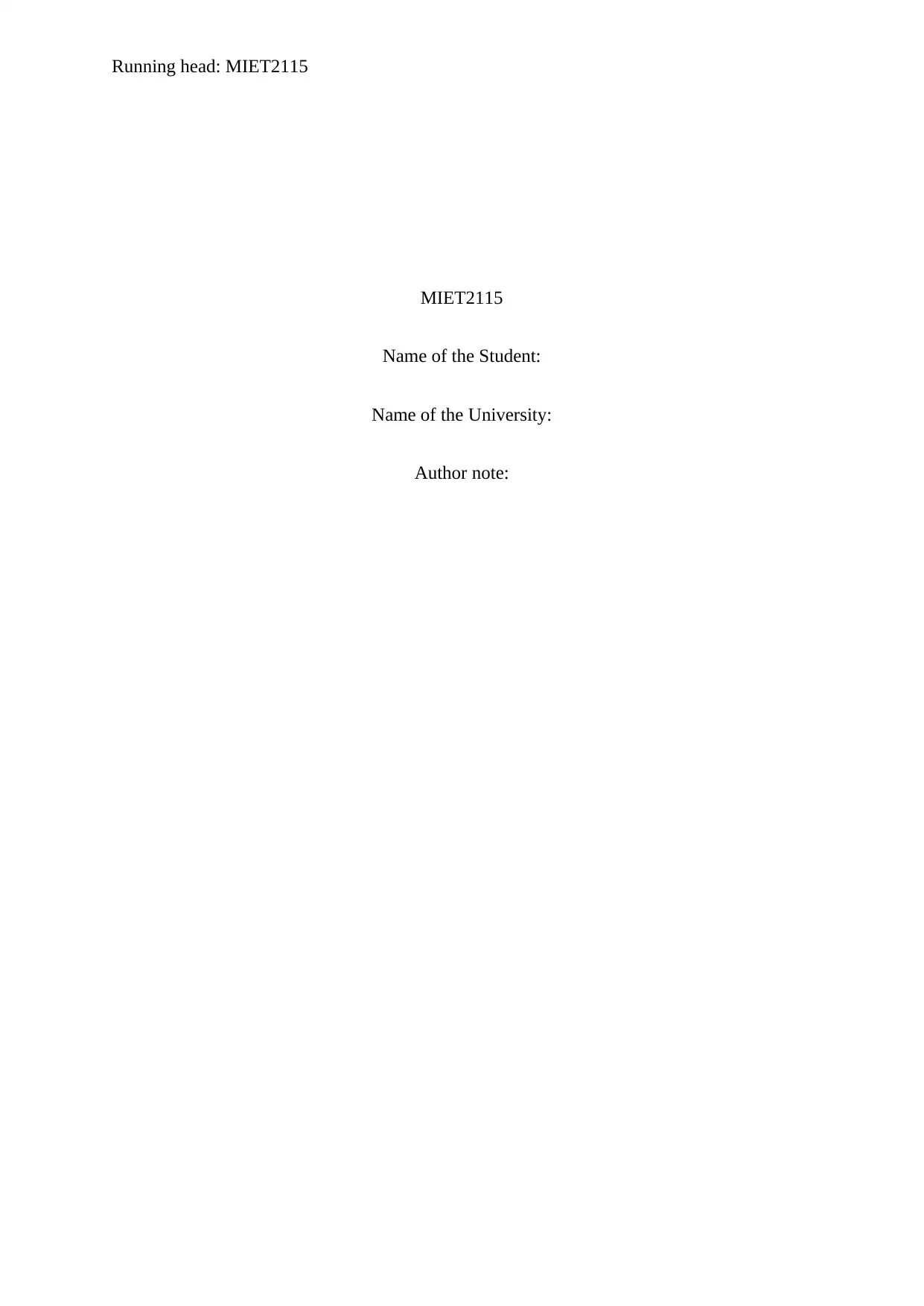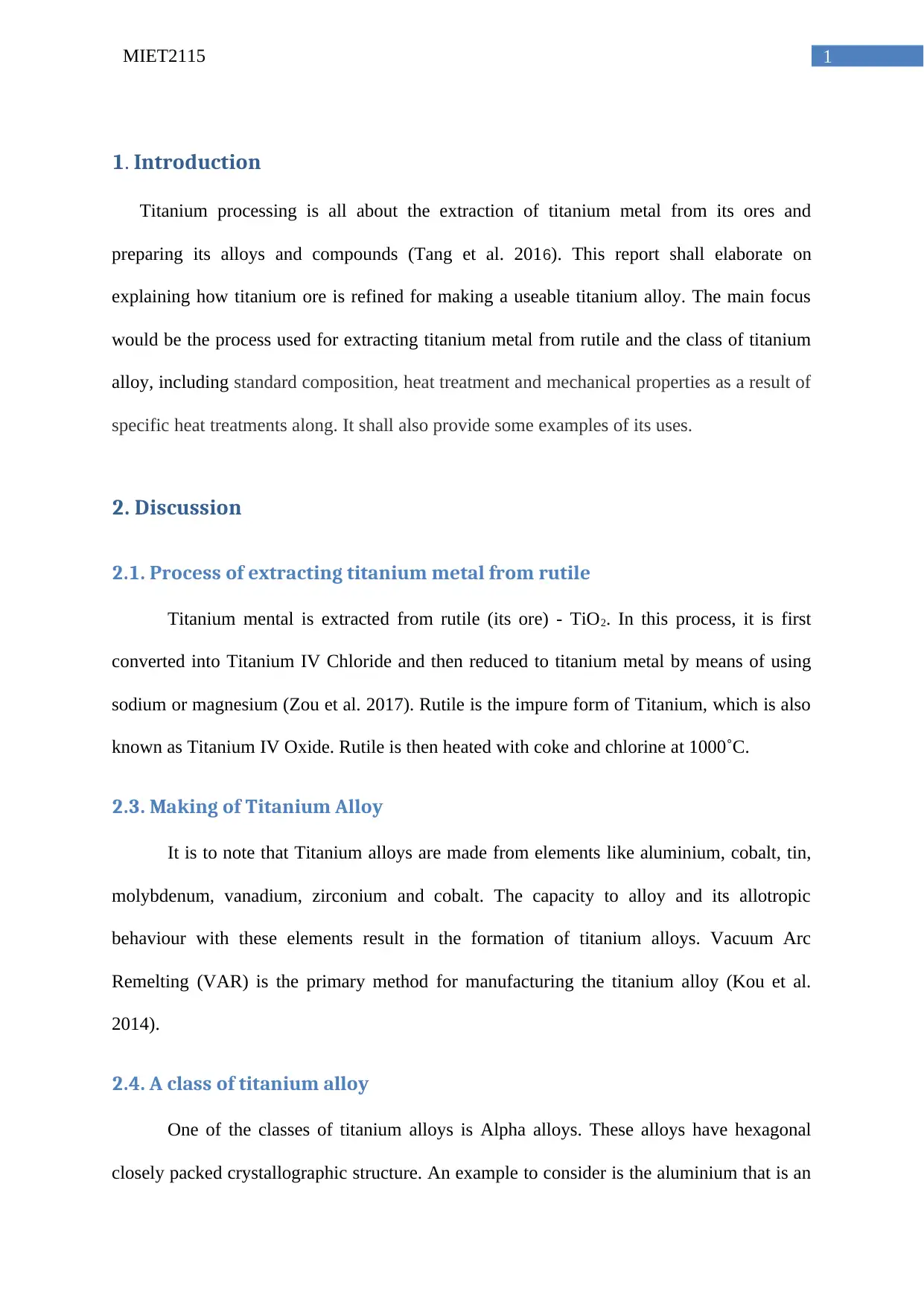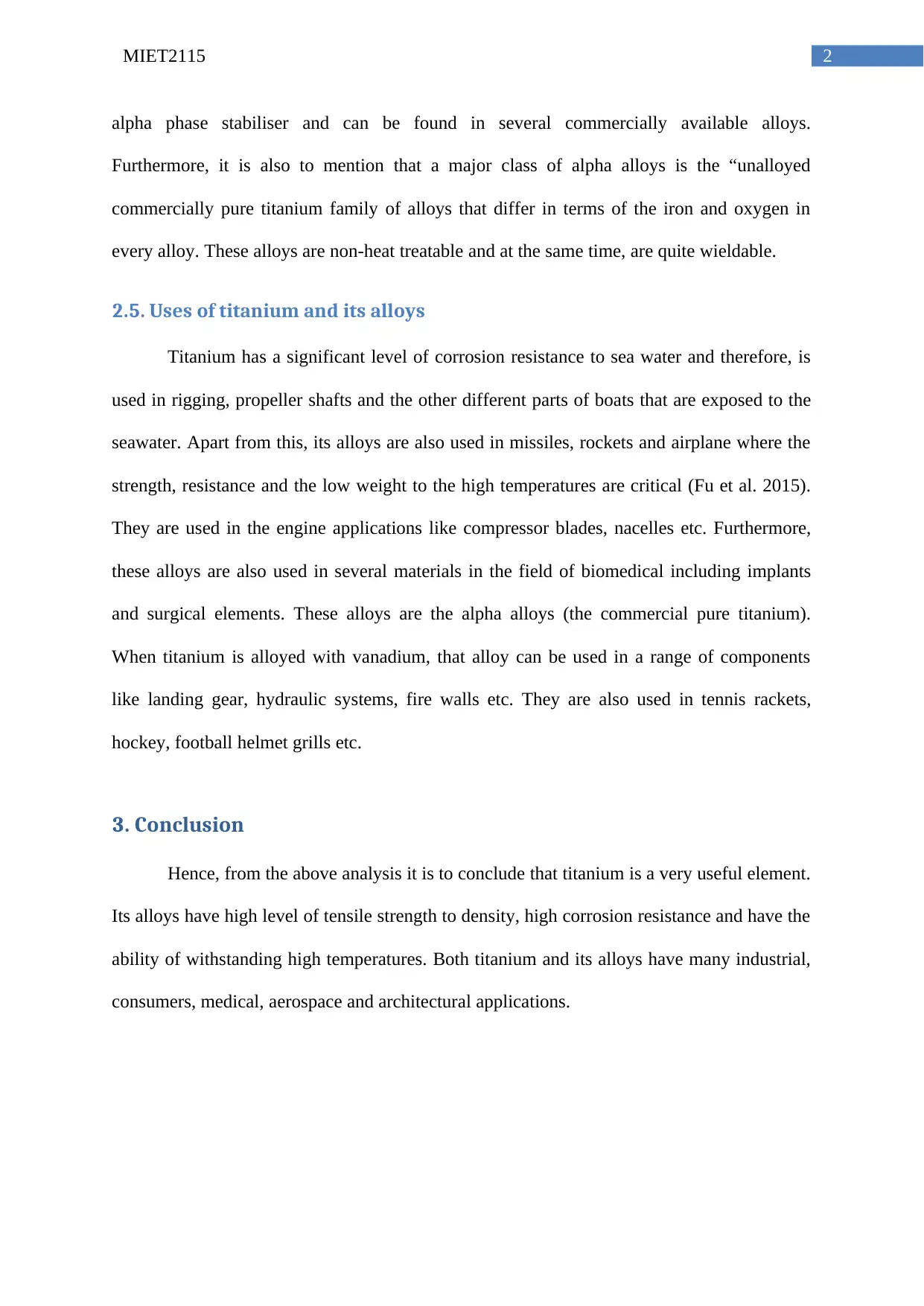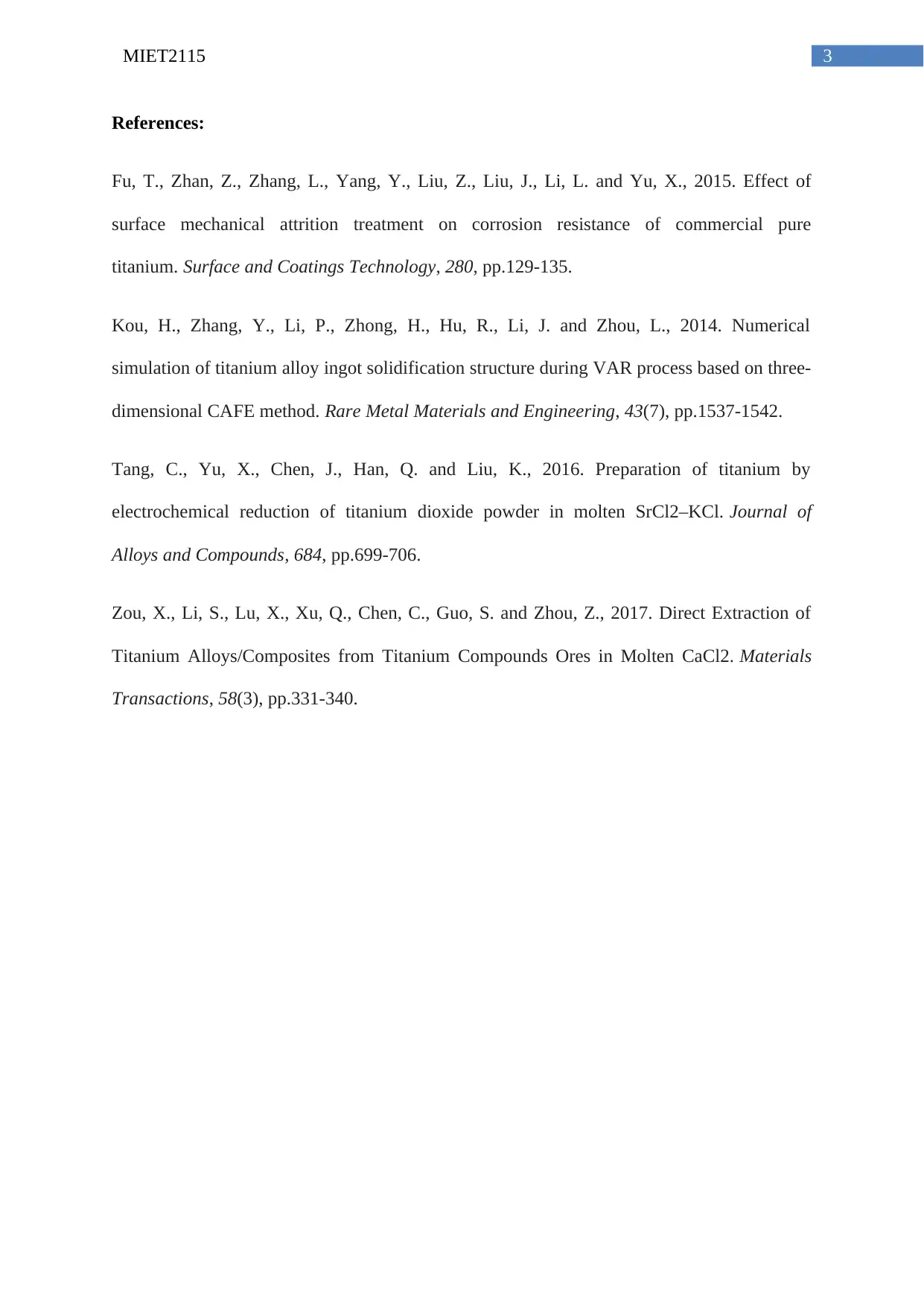MIET2115 Report: Titanium Extraction, Alloys, and Industrial Uses
VerifiedAdded on 2022/08/25
|4
|833
|46
Report
AI Summary
This report provides a comprehensive overview of titanium and its alloys. It begins by explaining the process of extracting titanium metal from rutile ore, detailing the conversion to titanium IV chloride and subsequent reduction to titanium metal using sodium or magnesium. The report then discusses the manufacturing of titanium alloys, highlighting the use of elements like aluminum, vanadium, and others, as well as the Vacuum Arc Remelting (VAR) method. It focuses on alpha alloys, including their characteristics and examples like commercially pure titanium. The report also explores the diverse applications of titanium and its alloys in various industries, including aerospace (missiles, rockets, and airplanes), biomedical (implants and surgical elements), and consumer products (tennis rackets). The analysis concludes with a summary of titanium's properties and its wide-ranging applications.
1 out of 4










![[object Object]](/_next/static/media/star-bottom.7253800d.svg)